Mount Fuji, with its snow-peaked top and serene slopes, overlooks the calm waters of five lakes which stand guard to protect it. The Japanese consider it to be the epitome of beauty and perfection and have about eight-hundred shrines dedicated to celebrating its eternal ethereal elegance. It is intrinsically tied to Japan’s rich culture and complex theology. So, when a print, with a giant wave towering over three fishermen boats, higher and mightier than Mount Fuji itself, was crafted by Hokusai and his ingenious wood carvers, the Western world was captivated by its splendour.
To understand the physical and metaphorical enormity of “The Giant Wave” by Hokusai, one has to understand the tumultuous social and economic situation of 17th-century Japan. After the Battle of Sekigahara, fought between feudal clans for power over Japan, the Tokugawa shogunate took control over Edo or modern-day Tokyo. The shogunate was stern regarding their policies, which would govern Japan during the Edo period. The borders of Japan were closed down and a strict social hierarchy was established, one which would restrict interaction between different classes. At the top, the shoguns and feudal lords ran the show while the merchants at the bottom lived on the most rudimentary form of trade because of travel restrictions within Japan.
However, change arrived in the land of Japan in the form of a rise in the construction trade and banking facilities. The merchants were as rich as the nobles, if not more. They did not hold back from spending it. Edo had transformed from a city which had bled in a civil war, to one which thrived with music and art. It had lively restaurants and open parks, bustling brothels and wary bars. The city boomed with life. Amidst all its beauty, Hokusai was born.
Before his birth and during his childhood, painters were acquisitioned by the court of Edo’s entertainment district to paint the scenes of its effervescent streets and shops. These pieces of Japanese art, unlike their Western contemporaries, were developed in isolation from the rest of the world. Japanese paintings from the Edo era had a flow, unlike Western paintings which were static and presented only one scene.
Since life in Edo was buzzing and thriving with kabuki artists performing their art, and scholars advancing their science, people who had begun to travel to Edo from other parts of Japan never wanted to part without having bought the famous Japanese woodblock prints, Ukiyo-e. Ukiyo-e translates to “pictures from the floating world”. It depicted the brothels and performers of Edo within the confines of the rule of shoguns and painted scenes from a world which teemed despite its social and political tensions.
Hokusai was hired by kabuki artists to paint their portraits which went for sale in the local markets and soon enough, he sought his way into the world of art. Although the shores of Japan were closed, two Dutch ships were allowed to visit once a year for trade. These vessels brought with them Hokusai’s inspiration. Dutch prints were popular for depicting neighbourhoods in plain colours with scenes of commoners on the streets, on their way to work or back to their chambers. Hokusai had not found commercial success in the first four decades of his professional life as luck wasn’t on his side. However, he had an unshakable urge to learn and grow which triggered him to embark on a new journey.
Thirty-six views of Mount Fuji portray its brilliance in silent patterns and plain colour palettes. The Great Wave off Kanagawa, with its claw-like splashes and rogue form, took over the denizens of 19th century Japan. Hokusai had put its beauty on paper when he was in his seventies, a time he considered to be his prime as he planned on living till the age of hundred and ten. He painted the ferocious wave as a symbol of Western influence on Japanese culture. The terrifying uncertainty of the future shook the waters of Kanagawa Lake and threatened to engulf the fishermen. However, the fishermen look poised in their journey into the unknown. The splashes become the snow on top of the mountain. The sea became the sky in this masterpiece of print.
The print is more horizontal than other Japanese prints which nod to the Dutch style of low-lying horizontal paintings. Hokusai was an experimenter and adventurer, meandering his way through the alleyways of art. He would pick up a spice from one stall and a pot from another and create masterful blends of art throughout his late years.
In the era of Impressionism, when art experimented with blurring the lines between reality and illusion, Hokusai inspired an artist who dreamed of painting the night sky from his room in the Saint-Paul asylum. He named it “The Starry Night”. He captivated the mind of another Impressionist French composer who crafted tunes with his creative genius. Claude Debussy composed “La Mer” with The Great Wave as his lighthouse for the album.
Written by Vaishnavi Katiyar for MTTN
Edited by Tejas Kulkarni for MTTN
Featured artwork by various ukiyo-e artists
Featured Image by Hokusai and Debussy
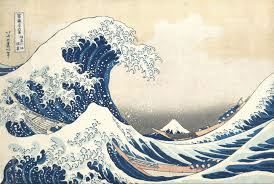
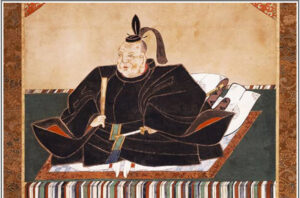
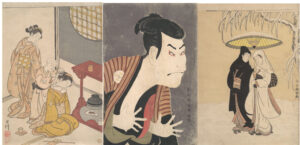
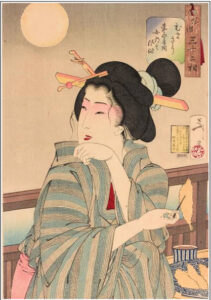
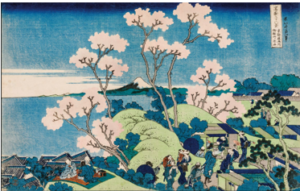
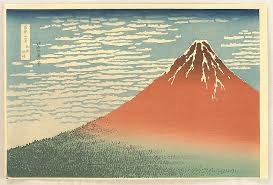
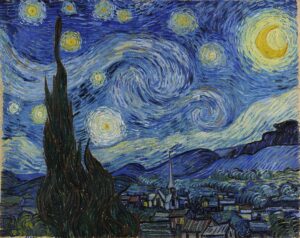
Leave a Reply
You must be logged in to post a comment.